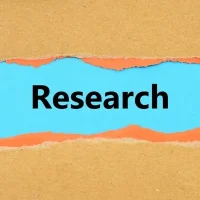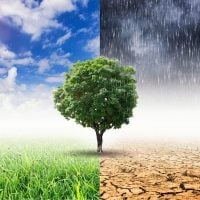The International Union for Conservation of Nature (IUCN) stands as a pivotal organization in the global conservation landscape. Founded in 1948, IUCN is the world’s first global environmental organization, bringing together governments, civil society, scientists, and local communities to address pressing environmental challenges. With a mission to influence, encourage, and assist societies throughout the world to conserve the integrity and diversity of nature, IUCN plays a crucial role in shaping policies and practices that promote sustainable development.
The organization is perhaps best known for its Red List of Threatened Species, which serves as a critical indicator of the health of the world’s biodiversity. IUCN operates through a unique structure that combines a membership of government and non-governmental organizations with a network of experts and practitioners. This collaborative approach allows IUCN to leverage diverse perspectives and expertise in conservation efforts.
The organization’s work spans various sectors, including biodiversity conservation, climate change adaptation, and sustainable resource management. By fostering partnerships and promoting knowledge sharing, IUCN aims to create a more sustainable future for both people and nature.
The Role of Data in IUCN’s Operations
Data serves as the backbone of IUCN’s operations, guiding decision-making processes and informing conservation strategies. The organization recognizes that effective conservation requires a solid understanding of ecological systems, species populations, and human impacts on the environment. By collecting and analyzing data, IUCN can identify trends, assess risks, and develop targeted interventions that address specific conservation challenges.
This data-driven approach not only enhances the effectiveness of conservation initiatives but also ensures that resources are allocated efficiently. Moreover, IUCN emphasizes the importance of high-quality data in fostering transparency and accountability in conservation efforts. By making data accessible to stakeholders, including policymakers, researchers, and local communities, IUCN promotes informed decision-making and encourages collaborative action.
The organization’s commitment to data integrity is evident in its rigorous methodologies for data collection and analysis, which adhere to international standards. This focus on data quality not only strengthens IUCN’s credibility but also enhances its ability to advocate for evidence-based policies at national and global levels.
How IUCN Analyzes and Utilizes Data
IUCN employs a variety of analytical tools and methodologies to process the vast amounts of data it collects. One of the key approaches is the use of Geographic Information Systems (GIS), which allows for spatial analysis of ecological data. By mapping species distributions, habitat types, and human activities, IUCN can visualize complex relationships within ecosystems and identify areas that require urgent conservation attention.
This spatial analysis is particularly valuable for prioritizing conservation actions and allocating resources effectively. In addition to GIS, IUCN utilizes statistical modeling techniques to predict future trends in biodiversity and assess the potential impacts of various conservation strategies. For instance, by employing population viability analysis (PVA), IUCN can estimate the likelihood of species survival under different scenarios, such as habitat loss or climate change.
These predictive models enable IUCN to develop proactive conservation plans that mitigate risks and enhance resilience in vulnerable ecosystems. Furthermore, IUCN actively collaborates with academic institutions and research organizations to refine its analytical methods and incorporate the latest scientific advancements into its work.
IUCN’s Collaborations and Partnerships for Data-driven Conservation
Collaboration is at the heart of IUCN’s approach to data-driven conservation. The organization partners with a wide range of stakeholders, including governments, NGOs, academic institutions, and indigenous communities, to enhance data collection efforts and share knowledge. These partnerships are essential for building comprehensive datasets that reflect the complexities of ecosystems and human interactions with nature.
By engaging local communities in data collection processes, IUCN not only empowers these groups but also ensures that traditional ecological knowledge is integrated into conservation strategies. One notable example of collaboration is IUCN’s work with the Global Biodiversity Information Facility (GBIF), which facilitates the sharing of biodiversity data across borders. Through this partnership, IUCN contributes to a global network that provides access to critical information on species distributions and ecological trends.
This collaborative framework enables researchers and policymakers to make informed decisions based on a wealth of data from diverse sources. Additionally, IUCN’s partnerships with organizations like the World Wildlife Fund (WWF) and Conservation International further amplify its impact by combining resources and expertise to tackle complex conservation challenges.
Case Studies: Successful Conservation Actions Informed by Data
IUCN’s commitment to data-driven conservation has yielded numerous success stories that highlight the effectiveness of this approach. One such case is the recovery of the Arabian Oryx, a species once considered extinct in the wild. Through meticulous data collection on population dynamics and habitat requirements, IUCN was able to inform reintroduction efforts that involved breeding programs in captivity followed by carefully planned releases into protected areas.
As a result of these efforts, the Arabian Oryx population has rebounded significantly, showcasing how data can guide successful conservation interventions. Another compelling example is IUCN’s work on marine conservation in the Coral Triangle region of Southeast Asia. By utilizing data on fish populations, coral health, and socio-economic factors affecting local communities, IUCN developed targeted strategies for sustainable fisheries management.
The organization facilitated stakeholder engagement through participatory mapping exercises that allowed local fishers to contribute their knowledge about fishing grounds and species abundance. This collaborative approach not only improved fishery management practices but also enhanced community resilience by promoting sustainable livelihoods.
The Future of Data-driven Conservation Efforts by IUCN
Looking ahead, IUCN is poised to continue its leadership in data-driven conservation efforts as environmental challenges become increasingly complex. The organization recognizes the need for innovative approaches to data collection and analysis that leverage emerging technologies such as remote sensing, artificial intelligence (AI), and big data analytics. By harnessing these tools, IUCN aims to enhance its capacity to monitor biodiversity changes in real-time and respond swiftly to emerging threats.
Furthermore, IUCN is committed to fostering a culture of open data sharing within the conservation community. By promoting transparency and collaboration among stakeholders, the organization seeks to create a more inclusive approach to conservation that empowers local communities and enhances collective action. As global biodiversity continues to face unprecedented pressures from climate change, habitat loss, and pollution, IUCN’s emphasis on data-driven strategies will be crucial in guiding effective responses that safeguard our planet’s natural heritage for future generations.
In conclusion, the International Union for Conservation of Nature exemplifies how data can be harnessed to drive impactful conservation efforts worldwide. Through rigorous analysis, strategic partnerships, and successful case studies, IUCN demonstrates that informed decision-making is essential for addressing the complex challenges facing our environment today. As we move forward into an uncertain future, the lessons learned from IUCN’s experiences will undoubtedly shape the next generation of conservation practices aimed at preserving our planet’s biodiversity.








































